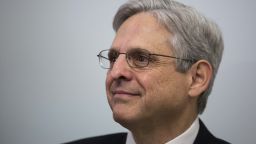CNN
—
A single new justice on the tightly divided nine-member Supreme Court can change the law in America, and as past ordeals demonstrate even a failed nomination can change the course of history.
As President Donald Trump’s pending nominee, Brett Kavanaugh, awaits Senate action, here are some of the more controversial Supreme Court nominations over the past five decades:

- Abe Fortas, 1968. It was 50 years ago that Democratic President Lyndon B. Johnson miscalculated in his attempt to elevate Abe Fortas, then an associate justice, to chief justice. This episode began when Chief Justice Earl Warren, the architect of Brown v. Board of Education and a series of other civil rights landmarks, announced in June 1968 that he would retire. Johnson selected Fortas, who in addition to his legal credentials was a longtime friend and adviser to Johnson. Republicans and Southern Democrats banded together against him, complaining of cronyism. It was a presidential election year, which further fueled their opposition. Fortas’ supporters could not overcome a filibuster, and Fortas had to withdraw. The situation then worsened for Fortas, who was accused of financial impropriety arising from side income he had collected from teaching and other connections. He left the high court altogether in May 1969. Republican Richard Nixon had won the presidency in November 1968, and he appointed conservative Warren Burger to the chief justice position.

- Robert Bork, 1987. When centrist conservative Justice Lewis Powell announced his retirement in June 1987, Republican President Ronald Reagan chose Robert Bork, then a judge on a prominent US appeals court in Washington (where Kavanaugh now sits). Bork, a former Yale law professor and US solicitor general, had an extensive record as a conservative legal thinker, and Democrats, who had just reclaimed a Senate majority in the 1986 elections, mounted a fierce campaign against him. Senators rejected Bork on a vote of 58-42. Bork returned to the DC Circuit but resigned the following year, saying he wanted to speak out on public policy and against liberal activism in the courts.

- Clarence Thomas, 1991. This fight has been recalled throughout the Kavanaugh episode because, like the current nominee, Thomas had appeared on a relatively smooth path to confirmation when sexually charged allegations emerged and senators were pressured to hold a second hearing. Thomas, nominated by Republican President George H.W. Bush to succeed Justice Thurgood Marshall, categorically denied the sexual harassment claims of Anita Hill, with whom he had worked at the Department of Education and the Equal Employment Opportunity Commission. Thomas had a valuable patron in respected Republican Sen. Jack Danforth of Missouri – a former boss – and Danforth helped him keep majority support. Thomas won confirmation on the closest vote in more than a century: 52-48. In contrast to today’s intensely partisan times, Thomas won the approval of 11 Democrats, along with a majority of Republican senators.

- Harriet Miers, 2005. Republican President George W. Bush chose Miers, then the White House counsel and an old friend from Texas, for the seat of retiring Justice Sandra Day O’Connor. (Bush had originally tapped John Roberts for that position but moved him to the chief justiceship when William Rehnquist died just before Roberts’ confirmation hearings were to be held.) Miers lacked a background in constitutional law and faced strong opposition from conservatives who believed she would not be a steadfast vote for the right. Bork called Miers’ nomination “a disaster on every level.” She withdrew within a matter of weeks, never even going through Senate Judiciary Committee hearings. Bush then chose US appeals court Judge Samuel Alito, who was confirmed on a vote of 58-42 and took his seat in January 2006.

- Merrick Garland, 2016. On Feb. 13, 2016, when Justice Antonin Scalia died suddenly, Senate Republican leader Mitch McConnell vowed to block any nominee of Democratic President Barack Obama, who still had 11 months left in his presidency. McConnell held fast to that warning with the backing of fellow Republican senators. Garland, who also sits on the DC Circuit, never received a hearing or Senate vote. The Scalia seat remained vacant until Republican Donald Trump won the presidency and within days of his January 2017 inauguration chose Neil Gorsuch. As a result, a Supreme Court that might have tipped to the left for the first time in decades, because of an Obama appointment, remained reliably conservative with Gorsuch, whom the Senate confirmed in April 2017 by 54-45.

- Brett Kavanaugh, 2018. The fate of this nominee remains unpredictable. As he denied sexual assault accusations in a hearing last week, he decried partisanship and had his own warning about the cycle of controversial nominations: “As we all know, in United States political system of the early 2000s, what goes around comes around.”





